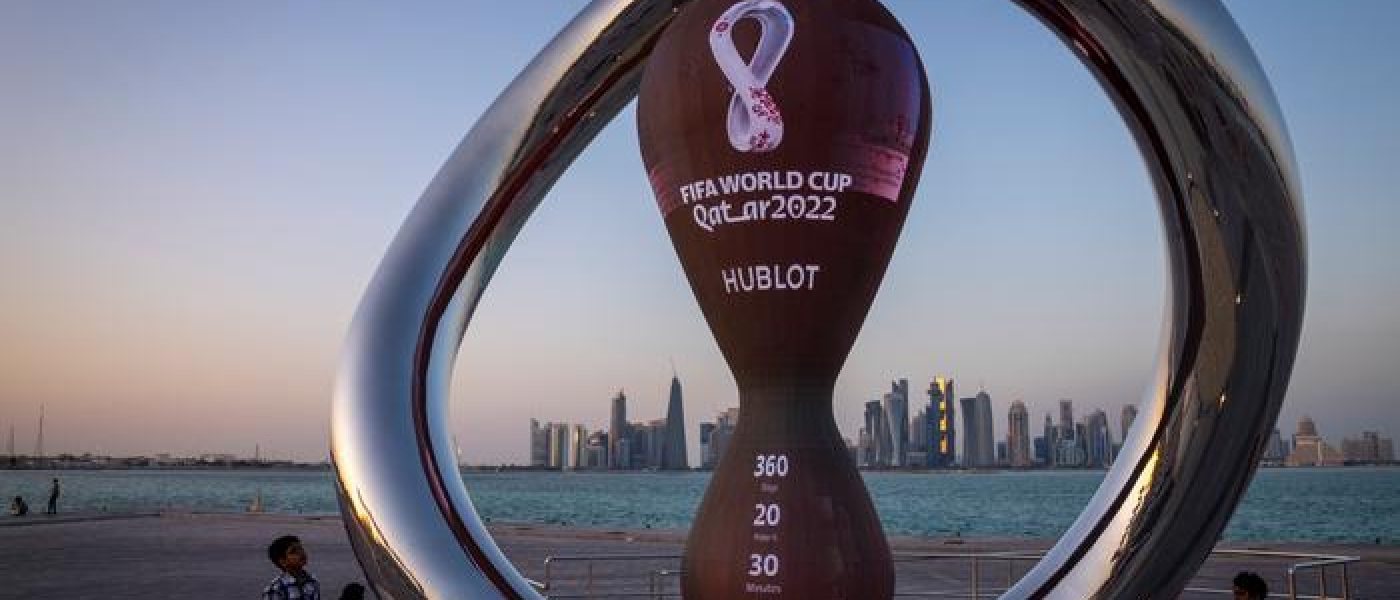Imagine Selhurst Park and Kenilworth Road playing in a World Cup match. That is exactly what will happen when the 2022 World Cup kicks off on November 21 in Qatar.
Between Crystal Palace and Luton Town’s football stadiums, there are eight stadiums within a 41-mile vicinity. The four-lane highways take an hour to travel from the Bedouin Tent design of Al Bayt in the north to the 40,000-capacity Al Janoub in the south. Seven of the eight premises can be reached in about 50 minutes using Doha’s new £26 billion Metro system.
All of this occurs in a city that has risen from nothing to a booming city in less than two decades, fueled by the world’s third-largest natural gas field and ensuring the smallest World Cup ever.
Many England fans considering visiting the Gulf to cheer on Gareth Southgate’s team will be perplexed as to why the world’s most anticipated sporting event is being held in a country half the size of Wales. That is a fact that will never change. There will be no answers to questions about what has happened since the 22 members of Fifa’s executive committee voted in December 2010.
Even the now-disgraced Sepp Blatter admitted that the vote was the beginning of the end for his Fifa empire. The fact remains, however, that Qatar will host the World Cup. And it will be unlike any World Cup before it.
The amount of money spent on stadiums and infrastructure is enormous, with estimates reaching £140 billion. The Qataris will not give you a figure if you ask them. But don’t dismiss the data presented. Nonetheless, the funds have been used to help build seven brand-new football monuments in the sands surrounding Doha, Qatar’s capital. After Fifa’s roadshow starts in 2026 for the United States, Mexico, and Canada, all but one of these will live on.
The showpiece and most dazzling of them all is the Lusail Stadium, which will host ten matches, including the final on December 18. It’s an 80,000-seat venue with a design inspired by the intricate traditional fanar lantern or cooking bowl that rises from the desert. Fans will have to get used to the beat of the Za’im drum, which, like the vuvuzela in 2010, could become the sound of the 2022 finals.
Qatar doesn’t have a lengthy football history, though it does have a track record of making wealthy footballers happy. The national team, on the other hand, is the current Asian champion after defeating Japan in the final in 2019. Cars decked out in the national flag’s maroon and white colours, horns blaring a joyful cacophony, took to the streets of Doha to celebrate the victory.
Last month’s Amir Cup final between Al Rayyan and Al Sadd, which featured a slew of Premier League stars, including Santi Cazorla and James Rodriguez, gave fans a taste of the World Cup atmosphere.
There were plenty of the traditional white robes. Despite the fact that no one had consumed any alcohol, rival fans taunted and cheered on their heroes, creating a tribal atmosphere. Around 2,000 Ghanaian migrant workers came just to show their support for former West Ham striker Andre Ayew. The drumbeat, orchestrated chants, and banners gave a hint of the flavour of next winter’s global showpiece.
Ronald De Boer, a former Holland international who ended his career in Qatar, said: “When the national team is playing you see the craziness take over the country and the ground is full every match. Here the World Cup will be the country. It will be everywhere you go, all around you, all the time, like an Olympic Games for football only. People will get that.”
Tamim El Abed, a Liverpool fan from a Palestinian family who is also the project manager of the Lusail build, resembled a proud parent talking about his newborn baby as he detailed the specifics of the showpiece stadium based on a Norman Foster design. “It’s only six metres from the front row of seats to the touchline here,” he told SunSport. We designed the stadiums so that the fans are as close to being on top of the pitch as possible. The stadiums will all be air conditioned, with lower-tier seats having under-floor diffusers. We have large nozzles at pitch level and in the upper tier to throw out high-velocity cold air.”
He added: “One other thing is that every pitch, in the stadium and the training grounds, will be exactly the same. It took us seven years of research and development to find the right blend of winter and summer seed to make sure we deliver the perfect surface for the climatic conditions. I’ve grown up here in Qatar and the country has pulled off some major feats but we needed to show that a small place could have such big ambitions, so we could show ourselves to the world. This will give the chance for the rest of the world to get to know and understand our country. We believe we have been misunderstood but football has the power to change that.”
